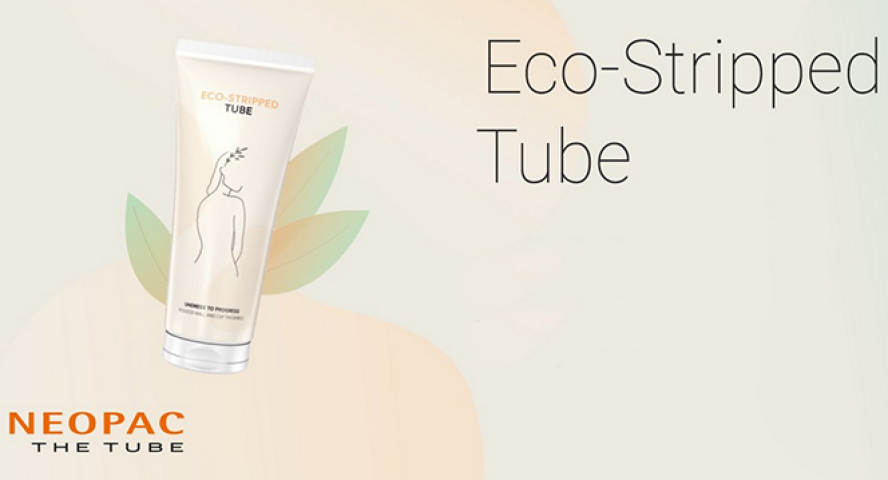Eco-Stripped Tube: getting rid of superfluous materials

Committed to the production of sustainable tubes, the company opted for weight reduction in the manufacture of Eco-Stripped, the latest tube in its eco-design series. The result is a lightweight tube that uses 30% less plastic than a standard tube.
A tube designed for packaging reduction: “Undress to progress”
This material reduction is brought about by walls that are 0.35 mm thinner than the 0.50 mm of a conventional tube. The same applies to the shoulders and cap, which have also been designed with reduced material use. Thanks to this plastic saving, four Eco-Stripped tubes can be made with the same amount of material as three conventional tubes of the same size.
Neopac estimates that these new manufacturing practices will result in tubes that save up to 7.7 tonnes of HDPE and PP materials per million tubes produced. This translates into an overall carbon footprint reduction of over 29 tonnes of CO2 per million tubes produced.
Tubes that save on plastics and participate in the circular economy
While weight reduction is one of the brand's pillars of eco-design, its commitment to eco-design is not new.
Its range of tubes already includes Polyfoil® MMB, a single-material tube made of PEHD from head to toe, fully ready for recycling. It should be noted that the classic Polyfoil® tube - which Neopac invented - is multi-layered: being composed of several layers of different plastics that are difficult to separate, it is less suitable for recycling.
Recycled, another tube in the range, is, as its name suggests, made from more than 70% recycled plastic, including 64% PCR (Post-Consumer-Recycled) plastic from recycled household waste, such as milk, water and juice bottles.
Sugarcane, for its part, is made from polyethylene extracted from the residues of sugar cane grown on arable land in south-eastern Brazil. Identical to traditional PE, this biosourced plastic is just as recyclable and offers the same qualities in terms of barrier properties and aesthetics. However, according to Neopac, its carbon footprint is 50% lower than that of a traditional PE cosmetics tube.
More information:
https://www.neopac.com




